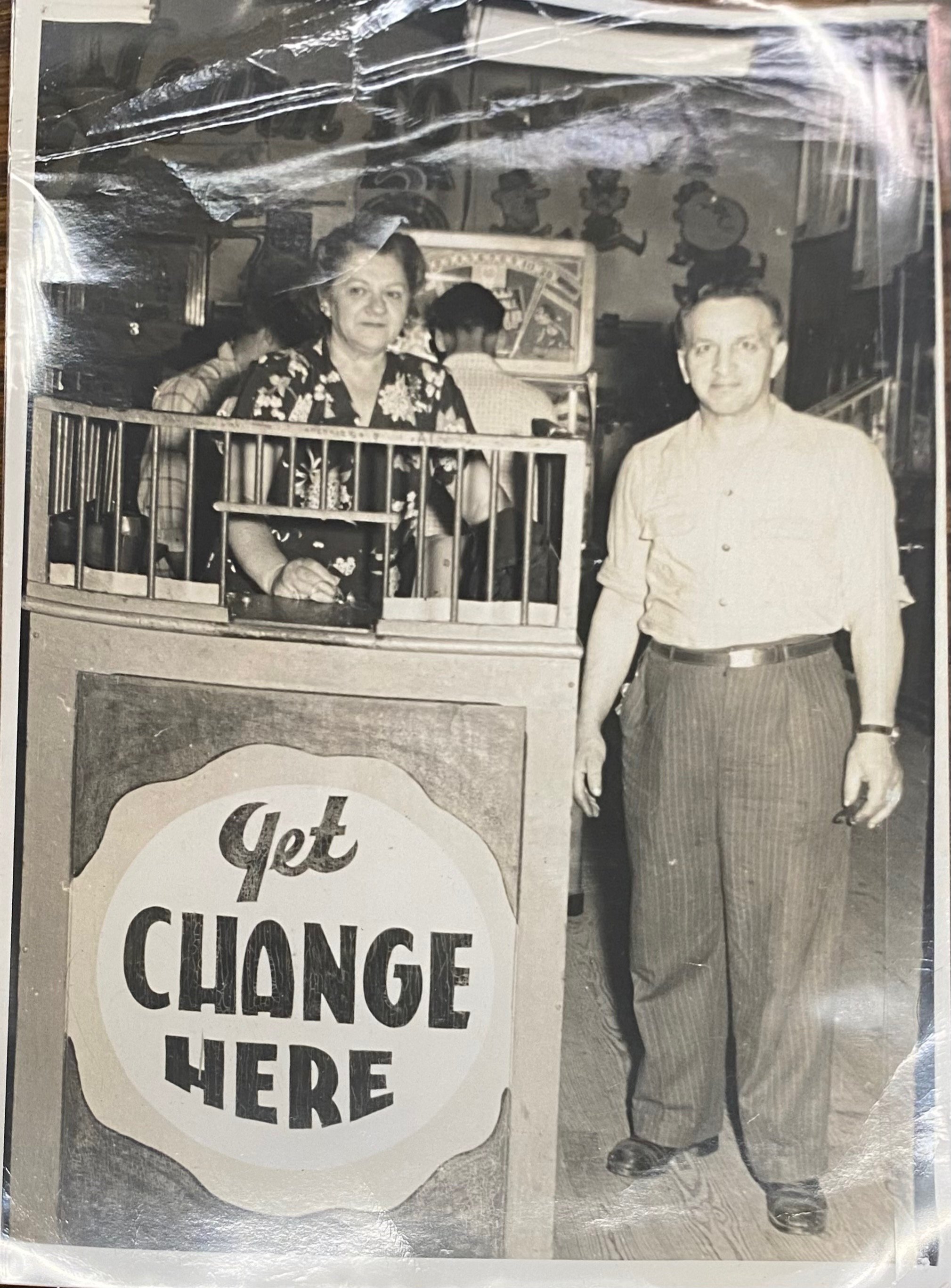
VIII. Bit Players
the coin route
Patrons of a local 7-Eleven enjoy cabaret-sized arcade game.
At its core, the arcade business is built literally one quarter at a time. While players might assume they're the primary customer for the games that are manufactured, the coin-op business model relies heavily on one key intermediary: the operator. Often small, family-run businesses, the operators are the ones who make the purchasing decisions. These entrepreneurs buy the machines, place them in locations and maintain them — essentially acting as the true customer for manufacturers while simultaneously serving as the connection point to the end user.
Because of this, operators develop an incredibly sophisticated understanding of their market through direct observation and analysis of coin drop data. They know exactly which types of games perform well in specific locations, how long a game will remain profitable in a given spot, and when it's time to rotate machines to maintain player interest. This intimate knowledge of consumer behavior makes operators invaluable partners for manufacturers as their purchasing decisions can make or break a game's success in the market.
"The successful warrior is the average man with laser-like focus.”
BRUCE LEE
Owner/operator of Fun City Arcade in Ocean City, Maryland (2014).
The job of an operator extends far beyond just placing games — they must also handle the constant challenge of maintenance and repairs. With each machine being a unique piece of complex equipment, operators need to understand the specific quirks and common issues of every game in their collection. They often work long, unpredictable hours, being on call to fix broken machines that could otherwise mean lost revenue and disappointed customers.
Being on the front lines, success requires careful attention to coin drop, strategic game placement and efficient maintenance practices. While a popular game in a good location could bring in thousands of dollars per week, operators have to carefully balance their revenue against the substantial costs of purchasing new equipment, maintaining existing machines, and managing relationships with location owners who typically provide space for their games in exchange for a predetermined portion of the revenue.

